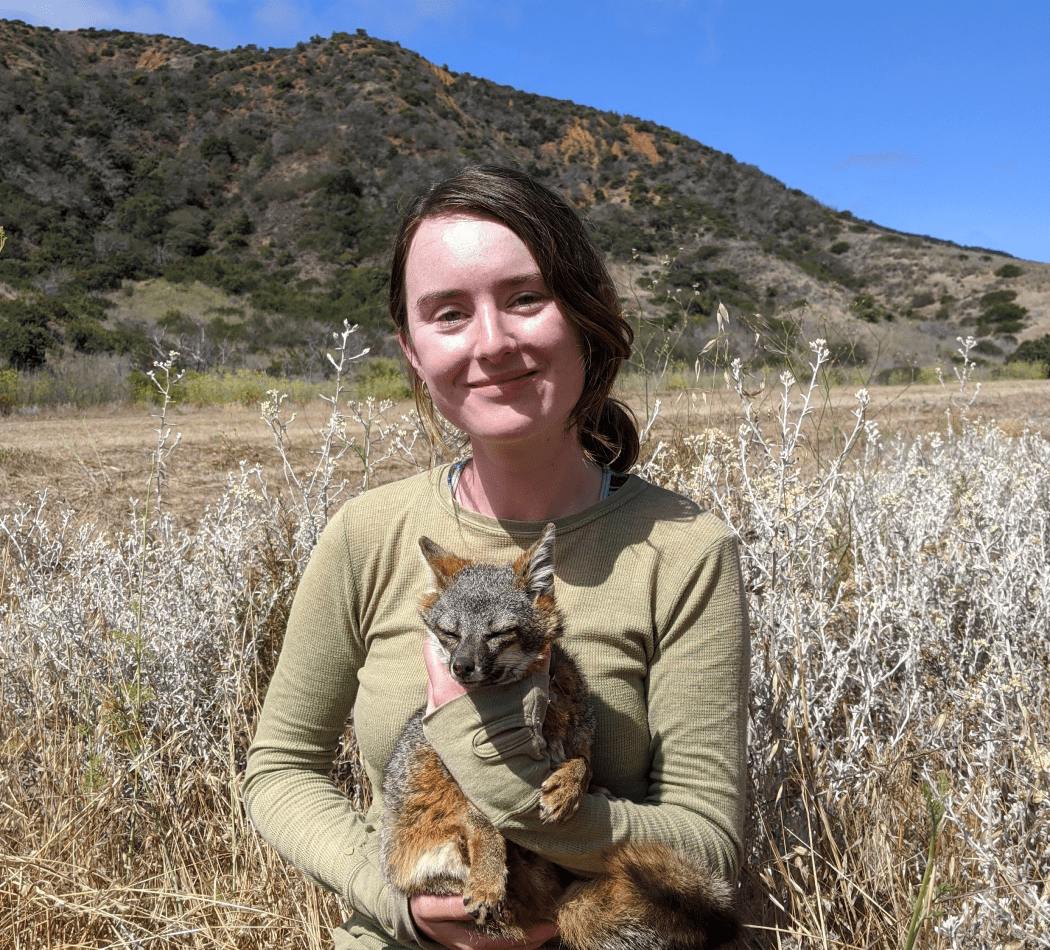Share this article
Wild Cam: How do city coyotes choose dens?
It was a relatively warm day in the middle of an Edmonton winter when a coyote sprang out of its den as Sage Raymond approached. A master’s student in ecology at the University of Alberta, Raymond was tracking coyotes to their dens by following the footprints they left in the snow. She was only about a meter from this den when the animal leapt out and surprised her. The day was warm enough that she expected it might be out basking rather than holed up in the darkness.
Raymond had been studying coyotes for months now and knew that coyotes don’t typically use their dens much until the spring when mothers give birth to pups, at least according to the literature.
Although Raymond felt bad for disturbing the animal she hadn’t expected to encounter, the coyote was nonplussed. After the initial escape, it walked in a circle for a moment before stretching its paws out and laying down for a nap a few meters away. Raymond took the opportunity to vacate the premises, but once she was far enough away, she watched through a pair of binoculars as the coyote stood back up, sniffed its den and sauntered back inside.
“It seems that the coyotes are using dens in some capacity in the winter,” said Raymond, a member of The Wildlife Society. She realized she still had a lot to learn about these coyotes.
Enlarge
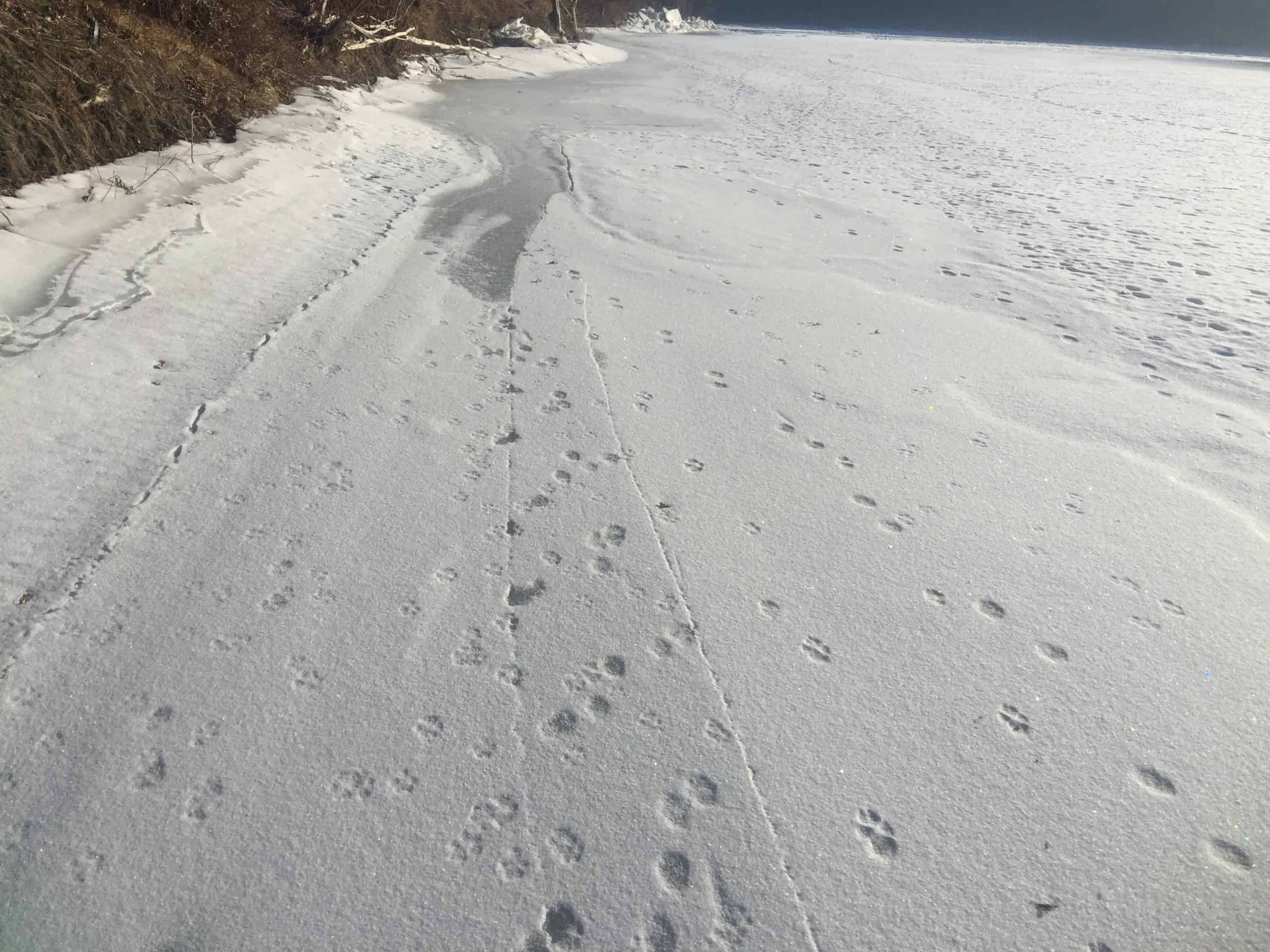
Credit: Sage Raymond
Her curiosity about urban coyote (Canis latrans) began when she started following footprints in the snow in Edmonton as a new master’s student on the Edmonton Urban Coyote Project. While following these tracks, she would come across coyote dens—as often as one for every few kilometers.
“It didn’t take me long until I had a pretty good sample size,” Raymond said.
A review of the scientific literature revealed there wasn’t a lot out there on coyote dens, so she started to focus her tracking on that. For a study published recently in the Journal of Wildlife Management, she tracked down dozens of dens between January and March 2021.
Enlarge
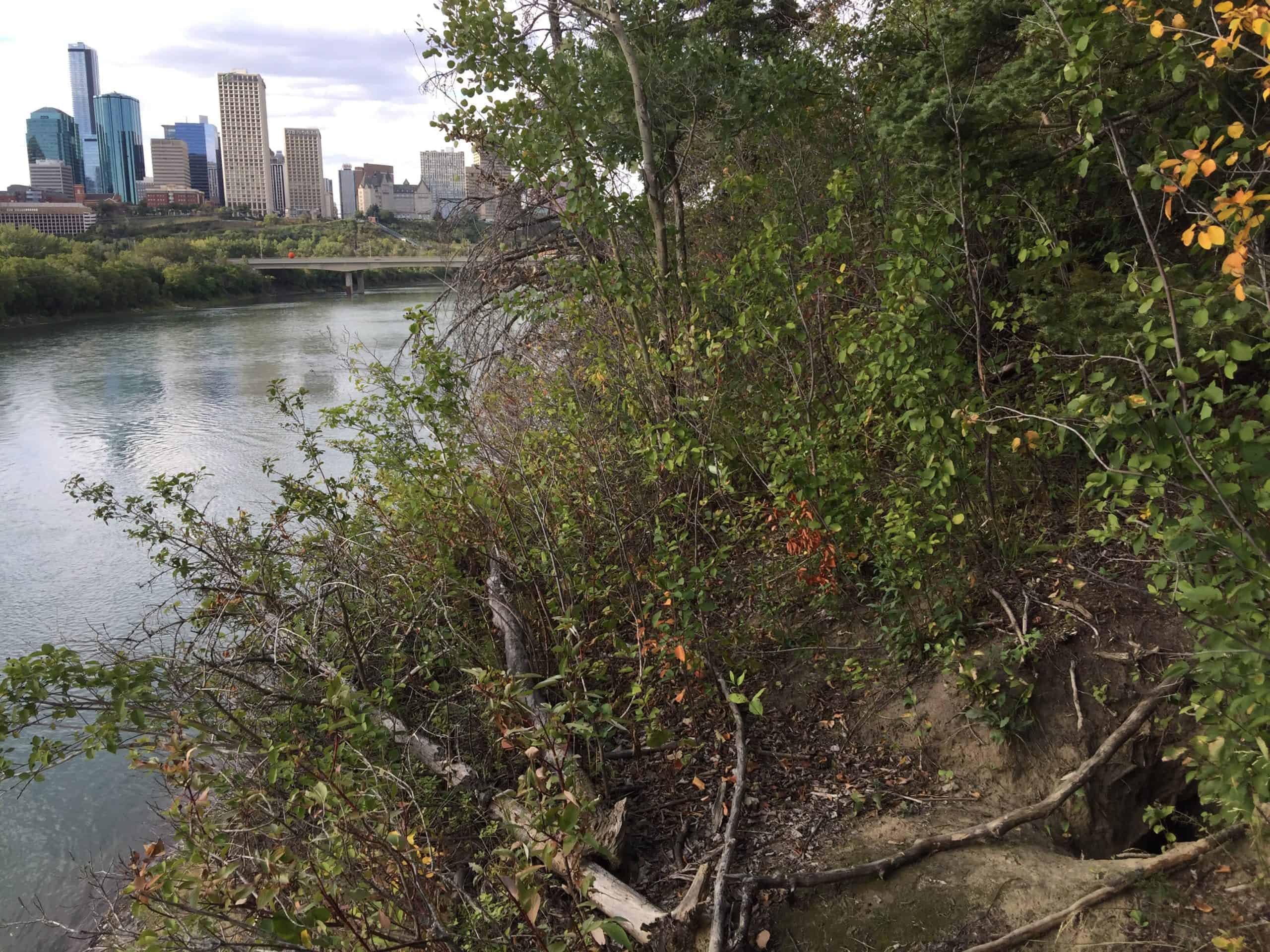
Credit: Sage Raymond
She and her colleagues then returned to 120 dens in Edmonton during the late summer when they would be inactive, many of them in the North Saskatchewan River valley, pictured above, and in other ravines around the city. Later that fall, researchers set up trail cameras at many of these dens that Raymond studied to obtain the photos in this article. She and Colleen Cassady St. Clair, a biology professor at the University of Alberta, examined the characteristics of dens located on public land in natural areas surrounded mostly by native vegetation. They looked at adjacent and surrounding land cover using GIS.
“At the broad scale, coyotes are not too fussy about where they den,” Raymond found. But a finer-scale analysis revealed some coyote preferences when it comes to denning in urban areas.
Enlarge
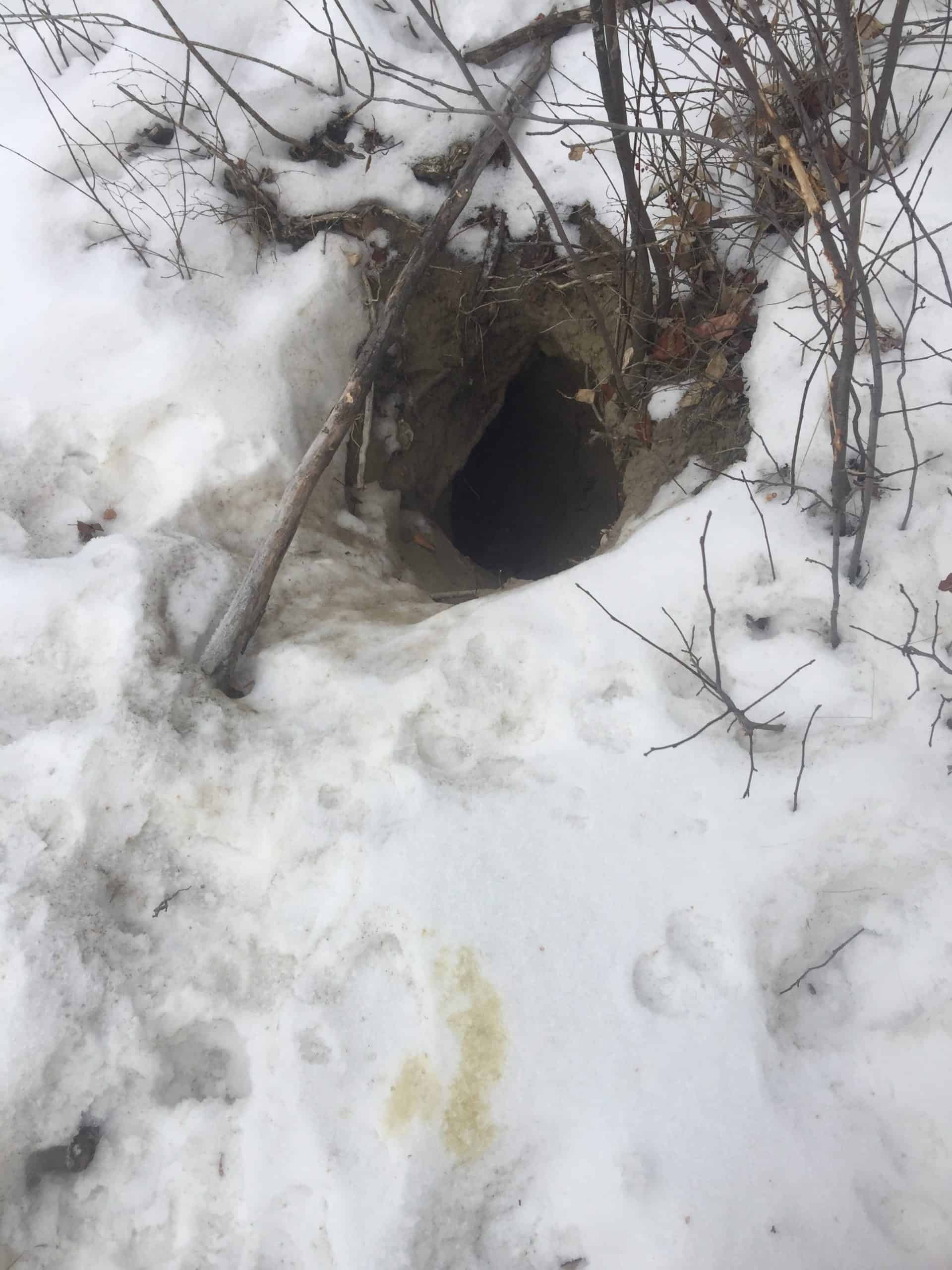
Credit: Sage Raymond
The coyotes typically denned at least 75 meters away from the larger North Saskatchewan River, for example, but they did like dens closer to smaller water sources. They also typically avoided denning in areas close to mowed grass and avoided roads.
As researchers have noted with other wildlife that use dens, these coyotes also typically preferred to den facing east. This is likely in order to capture more sunlight in early spring, Raymond said. They also tended to den on slopes, which also prevent flooding and are harder to access for people and dogs. These areas also typically offered a good view.
“It’s definitely better than your average basement suite in Edmonton,” Raymond said.
Enlarge
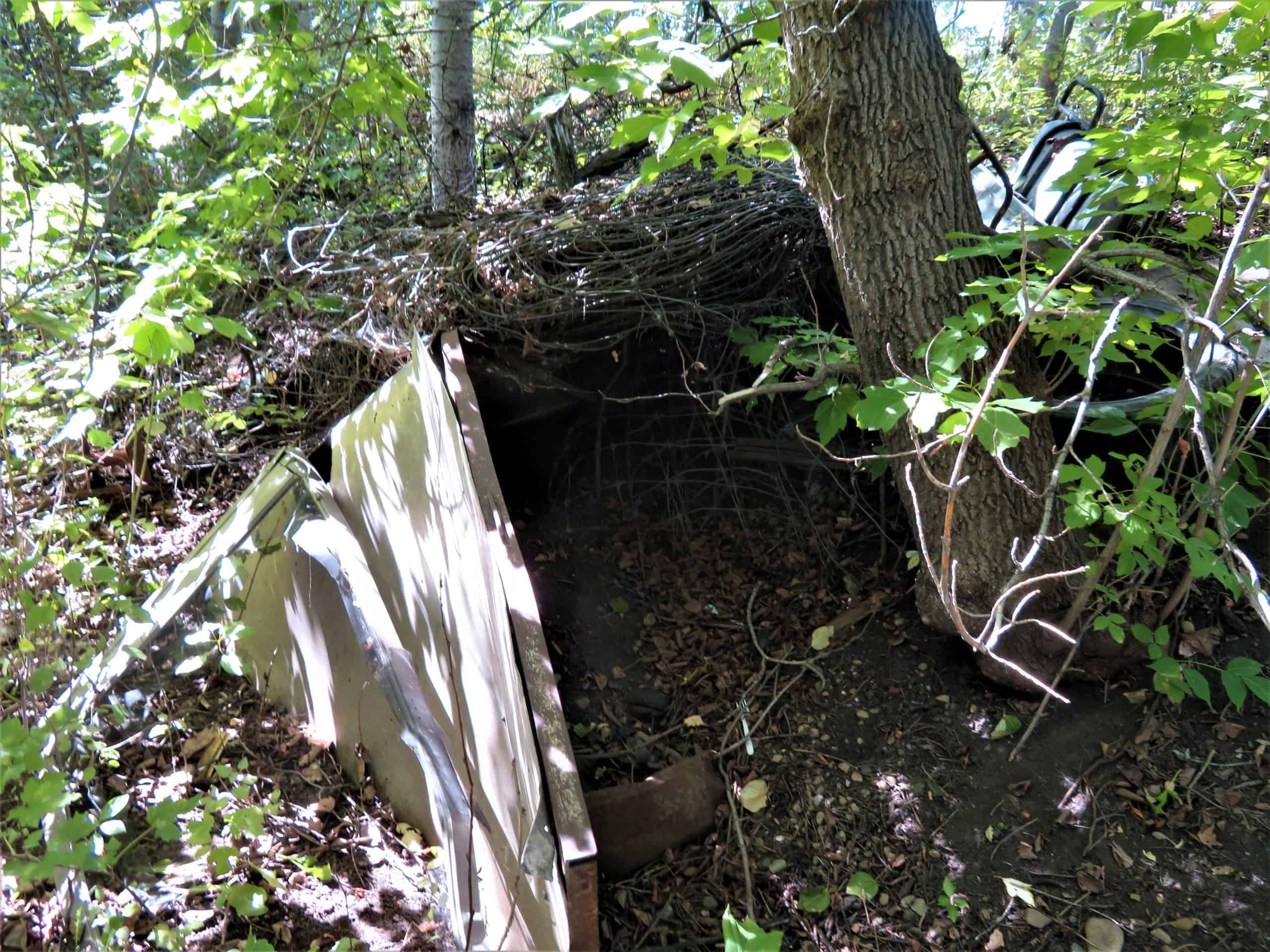
Credit: Sage Raymond
Coyotes preferred areas with lots of cover to hide in for their dens as well. But the urban environment put some unnatural twists on this in a few cases—Raymond found dens under shopping carts, shipping containers and in one case even an abandoned, flattened car. Some of these dens were in areas that had been used in past decades as trash dumps. “There’s some very old garbage out there,” Raymond said.
Coyotes may be taking advantage of some of this garbage. Raymond said that many of the dens had chewed up garbage around them. “That suggests that coyotes, and especially coyote pups, are chewing on garbage and using them as play objects,” she said.
St. Clair said that she has found a surprising number of golf balls and children’s toys at den sites.
Enlarge
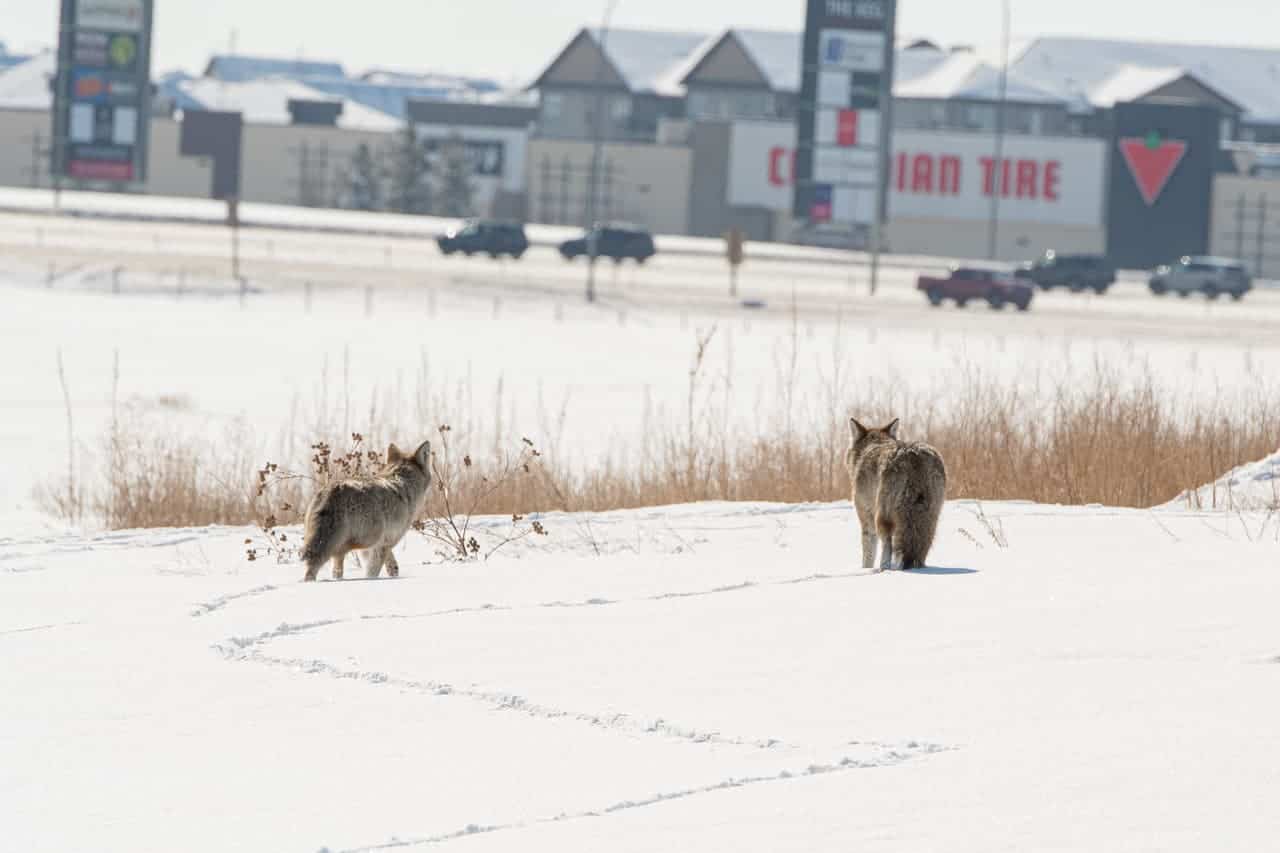
Credit: Dale Brochu
Conflict hot spots
The analysis showed that coyotes didn’t necessarily avoid areas with human structures if other factors were suitable. “What that suggests is that they are being very selective at this fine scale to be difficult to detect, but not necessarily avoiding humans in the surrounding area when they are denning,” Raymond said.
Comparison with a database of reported conflicts between humans and coyotes revealed a few trends as well. “We got a higher rate of conflict encounters during the pup rearing phase,” Raymond said. “That makes sense because the adult pair is feeling a bit more defensive over their pups.”
Enlarge
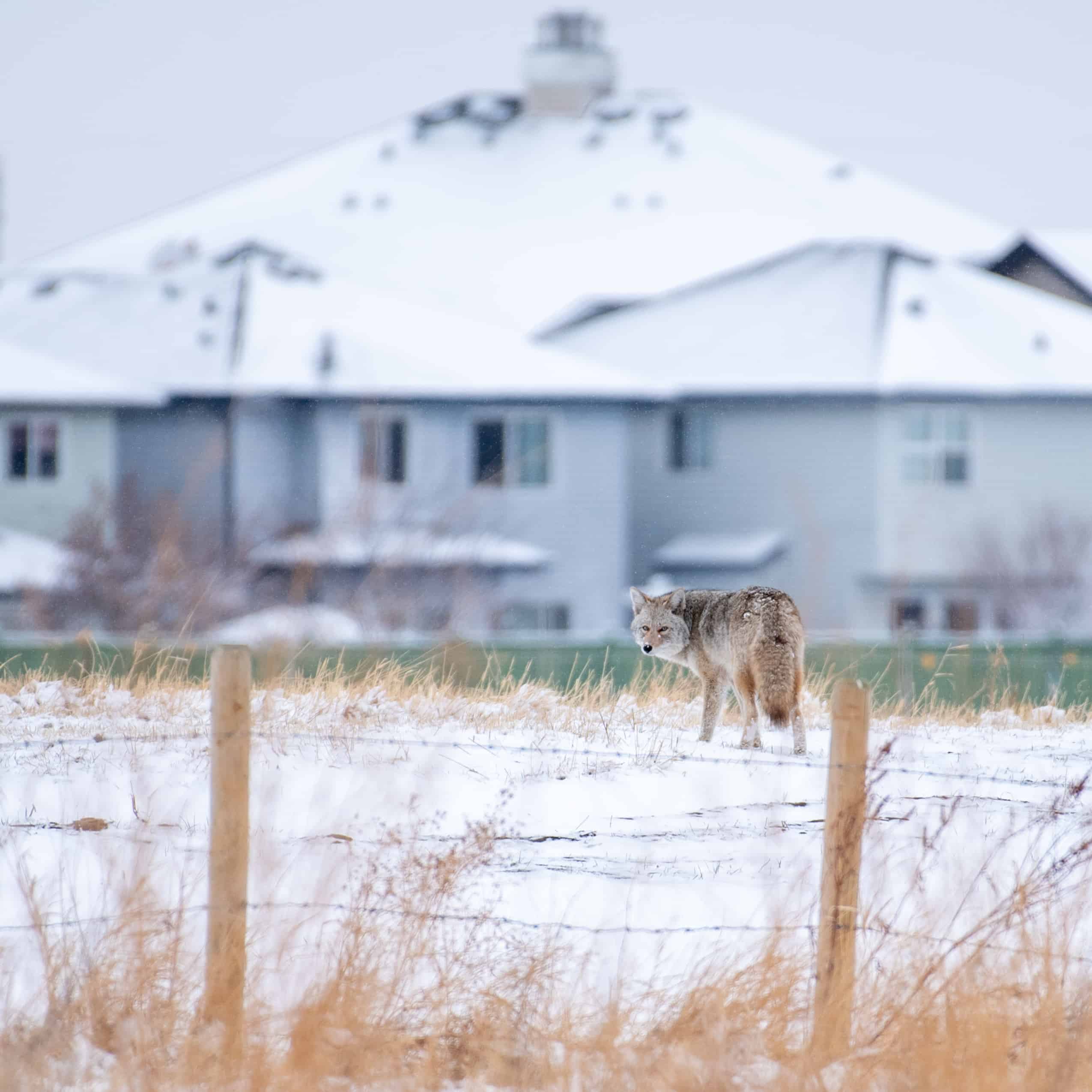
Credit: Sean Clarkson
These conflicts also happened more often around dens that were in areas more modified by humans such as mowed lawns or residential areas. Raymond speculated that this may be due to the fact that in more natural settings, coyotes have more opportunities to flee from humans.
Conversely, “if it’s in a soccer field and it’s put into a fight or flight situation, it doesn’t have very good options for fleeing,” she said. “So fight might be more likely in these less naturalized areas.”
Raymond said that this finding reveals opportunities for public education that might reduce conflict with coyotes.
“This study confirms that the pup rearing period is a time when there is more conflict between humans and coyotes, meaning that basic coyote safety precautions, such as keeping dogs on leashes, are extra important between April and July,” she said. “Where denning is likely to be problematic, such as near schoolyards, managers could proactively thin vegetation to reduce hiding cover and prevent denning.”
Enlarge
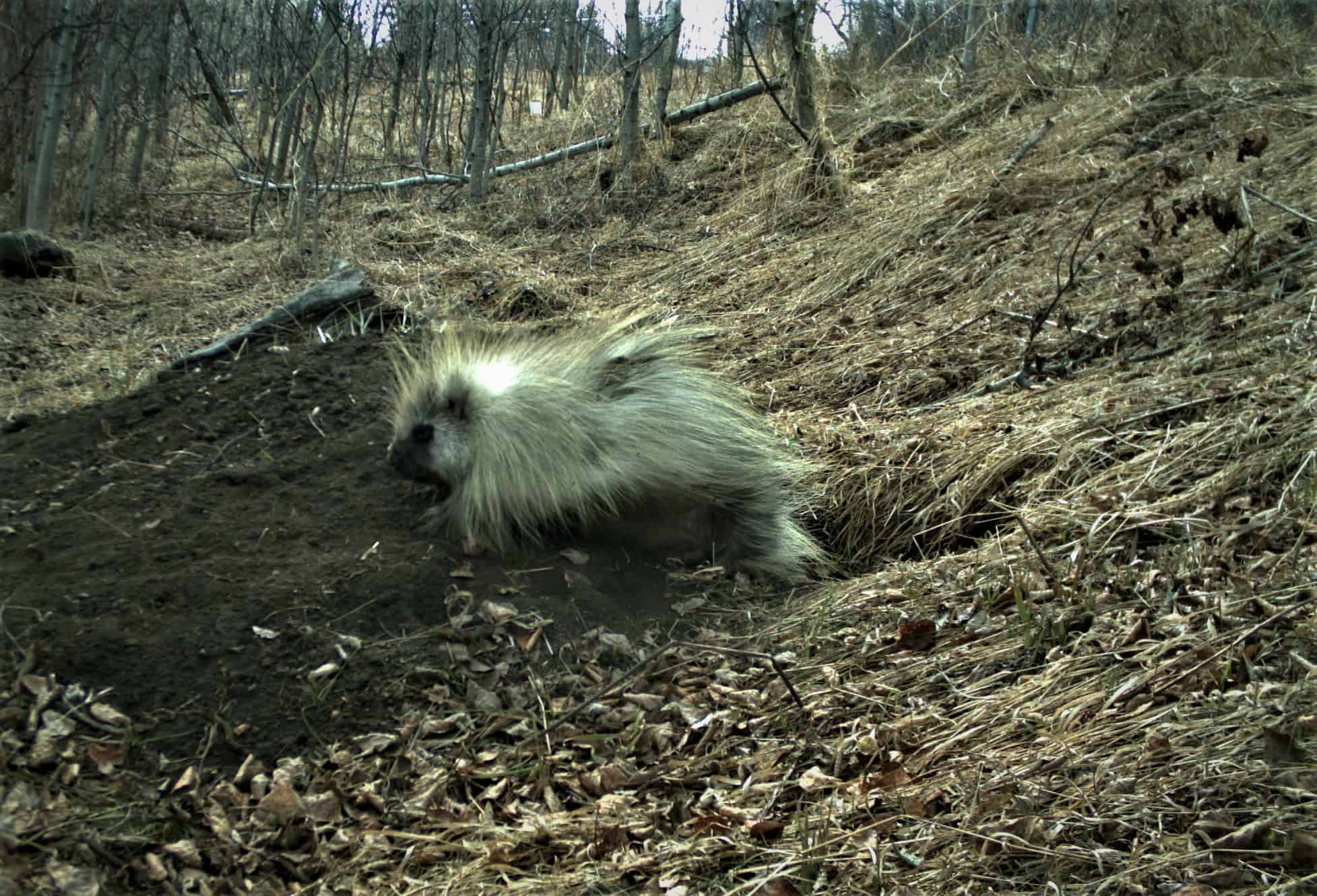
Credit: Sage Raymond
One curious thing they found was that coyote dens often got prickly intruders in the winter months. Raymond found porcupine (Erethizon dorsatum) quills or scat at 32% of the dens they analyzed. Since evidence in the tracks didn’t reveal signs of predation like blood in these cases, she believes that the porcupines are just borrowing these dens for shelter in the colder months when coyotes don’t use them as much—although they may occasionally come across them like Raymond did. This may be due to porcupines lacking access to the caves, rocks and tree hollows they normally favor as shelter within city limits, she said.
Enlarge
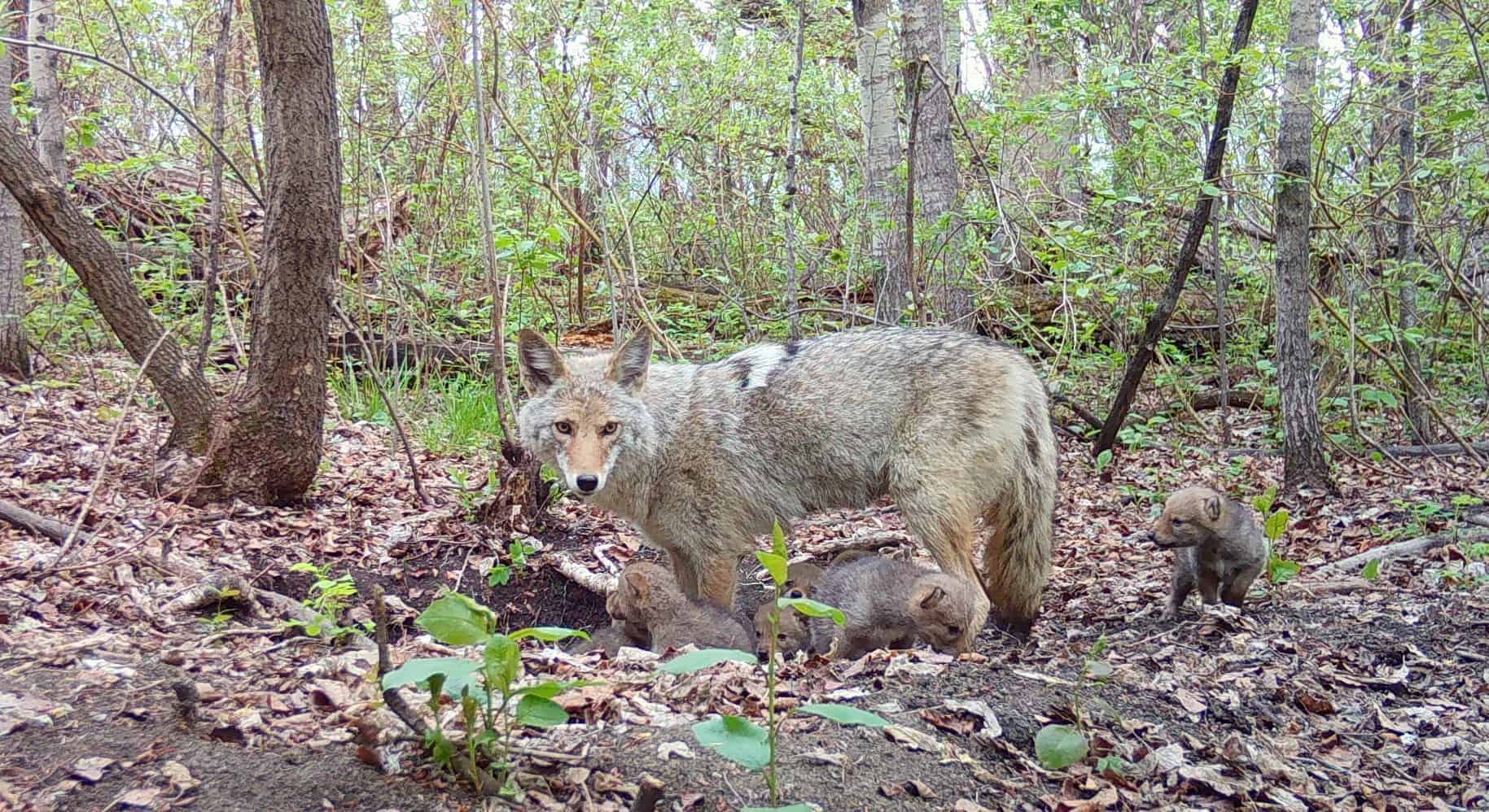
Credit: Sage Raymond
This article features research that was published in a TWS peer-reviewed journal. Individual online access to all TWS journal articles is a benefit of membership. Join TWS now to read the latest in wildlife research.
Header Image: Image courtesy of Lara Brenner



